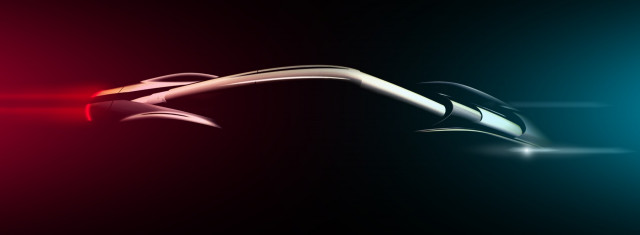Pininfarina launches own hypercar brand with an electric Bugatti fighter
If you’re a storied brand waiting to break free, your best strategy is to make a big splash.
Such is the situation of Pininfarina, which plans to launch a range of four new cars under its own name between 2020 and 2025, company executives told Motor Authority in a private meeting in New York on Thursday.
As a small, Italian custom styling and coachbuilding house that sometimes could include its own badge on Ferraris, Lancias, and Alfa Romeos, that’s a big leap for Pininfarina. “Pinin,” in Italian, means “small,” and there’s nothing small about what Pininfarina is trying to accomplish.
With money from Indian automaker Mahindra, which purchased Pininfarina in 2015, the company plans to launch a new automotive brand with its own line of products, Pininfarina Automobili, alongside its historic styling and coachbuilding operation.
Pininfarina is known for designing beautiful cars, but the executives expressed frustration that the company’s designs historically have fallen to the mercy of traditional automakers who decide whether or not to build them. That’s the motivation behind launching Pininfarina Automobili to produce its own line of cars. The only car ever sold under the Pininfarina name before was the 1980-1982 Pininfarina Spider 2000, a continuation edition of the long-running Fiat 124 Spider, a Pininfarina design from the 1960s that Fiat discontinued.
The company’s first new car, dubbed the PF0, will be an electric hypercar designed to compete with the Bugatti Chiron that the company will first publicly display at the Geneva auto show in 2019. A small group of investors, journalists, and ultra-wealthy potential customers will get an early look at a model next month at the Pebble Beach concours.
The carbon fiber PF0 will blast from 0-63 mph in less than two seconds and 0-186 mph in less than five seconds, according to the company. One version will have a top speed of almost 250 mph. The car will use four independent, axle-mounted motors to deliver active torque vectoring.
It will have a range of more than 300 miles “when you’re not driving it on the Nurburgring,” CEO Michael Perschke said. That would give it a battery capacity of roughly 100 kwh. Unlike most modern electric cars, the battery will not lie flat under the floor, but will be confined to the center tunnel. Designers couldn’t replicate a hypercar's feeling of a low center of gravity with seats mounted above a flat battery pack.
Perschke says the company will stick to building electric cars “because it no longer works to launch an aspirational brand with a gas engine. You have to start in the 21st century,” he said. He agreed with other automotive CEOs that the industry will change more in the next 15 years than it did in the last 50.
The company only expects to sell 35 to 40 PF0s in the U.S. and 125 to 150 globally.
Perschke spent years as head of global sales and strategy at Audi and had previous experience at Mercedes-Benz and Mitsubishi.
“We think the company needs to be bold enough, and the name is bold enough for a top-down strategy,” he said. The company will start with the most expensive model. As a competitor to the Bugatti Chiron, that would put the price somewhere between $2 million and $3 million.



Email This Page